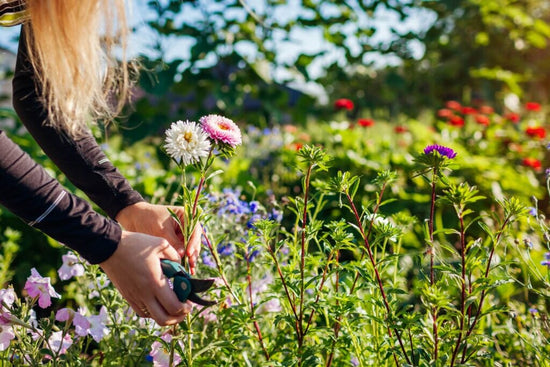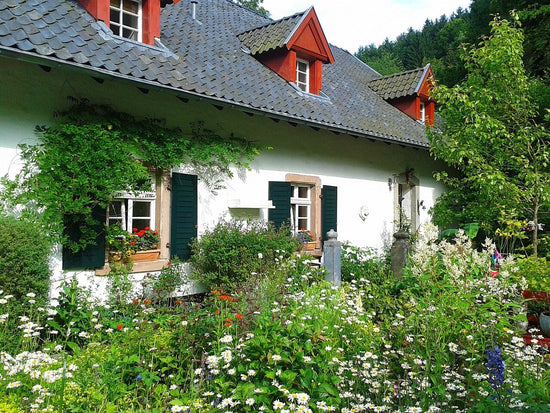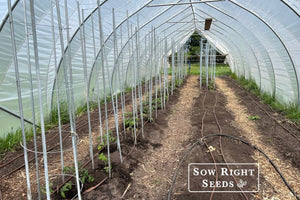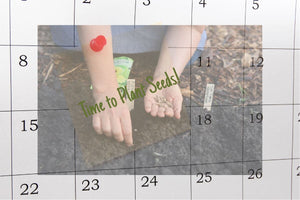How to Plant and Grow Annual Phlox from Seed to Bloom
PhloxPhlox flowers are native to North America. The word “phlox” is Latin for “fire” or “flame.” While most phlox is perennial, the annual varieties are perfect for all kinds of flower gardens and are especially popular with flower farmers.

With all the varieties of perennial phlox, you’re sure to see it growing wild near you. In the spring, you’ll notice woodland phlox blooming in April. Then moss or creeping phlox will bloom in May. The tall or garden phlox will bloom in June and July.
Annual varieties of phlox bloom in early spring and into summer. These annual phlox are the ones to grow for their sweet, fragrant flowers. The scent of annual phlox can be described as sweet, like a melon or honey.
The long, sturdy stems of annual phlox make them a good choice for cutting gardens. They can also be grown in wildflower and cottage gardens, where they can self-seed and come back year after year.
The color and scent of annual phlox attract beneficial pollinators. Plant annual phlox in your garden, and you will feed bees, butterflies, and hummingbirds.
How to Grow Annual Phlox from Seed
Phlox seeds can be started indoors six to eight weeks before the last spring frost. When sowing seeds outdoors, wait until all danger of frost has passed.
Press the seeds into the soil and lightly cover for a depth of 1/16”. Keep the seeds moist, and they will sprout in 1 to 3 weeks. Space plants 8 to 10 inches apart.
Pastel Shades Mix
This annual mix of phlox is perfect for all kinds of flower gardens. The pastel shades are delightful in a mass planting. The soft, muted shades of yellow, salmon, pink, rose, and white are also elegant in cut flower arrangements. Plant this fragrant heirloom mix in your garden to attract and feed our beneficial pollinators.
Tips for fail-proof annual phlox seed germination
Press seeds into the soil to 1/16”.
Cover with a light layer of soil.
A soil temperature of 60 to 65ºF is ideal.
Keep seeds moist until they germinate in 1-3 weeks.
Once seeds germinate, water from the bottom to prevent damping off.

How to Grow Annual Phlox Plants
Phlox flowers are so beautiful and easy to grow. Following these simple guidelines for sunshine, soil, and watering will ensure you have gorgeous blooms.
When looking for a location to plant phlox, it’s good to know that it can survive in a variety of locations. Phlox is even one of the few plants that can be grown near black walnut trees.
Phlox can be grown in rock, cottage, and cutting flower gardens.
Sun
Phlox grows best in full sun, but it can also be grown in part shade. As with most flowers, at least 6 hours of daily sunlight will produce the most blooms. In cooler climates, more sunlight is needed, and in hot climates, afternoon shade is helpful.
Soil
The optimal garden soil for phlox is sandy and slightly acidic. Most importantly, it needs to be well-draining soil that doesn’t leave the roots waterlogged to ensure healthy phlox plants.
Water
Consistent water will keep the flowers blooming and the phlox plant from wilting. Avoid overhead watering as it can contribute to mildew growth.
Fertilizer
You can use a slow-release balanced fertilizer. Avoid high nitrogen, as it encourages leaf growth and will result in fewer flowers.
Deadheading and Pinching
As with most flowers, deadheading can help with longer flower production. Removing flowers before they go to seed will keep the plant producing blooms.
Pinching back the middle stem can result in more branching. In our flower garden we didn't do any pinching, but we harvested flowers as they bloomed.
Solutions for Pests and Diseases
Phlox plants are fairly pest and disease-resistant, but there are a few things to watch out for.
Powdery mildew can be a problem when plants are too close together. To reduce mildew growth, give the plants enough space for sufficient airflow.
Slugs and snails love to munch on tender phlox plants. Use natural baits and methods to keep them from your flowers.

Harvesting Phlox
Once your beautiful phlox starts blooming, you will want to bring the gorgeous color inside to appreciate it.
Annual phlox is an excellent variety to use as a cut flower. It will typically last 7 to 10 days in a vase.
For use as a cut flower and the most extended vase life, cut phlox stems when about half of the blossoms in the cluster are blooming.
The best time to harvest phlox is in the cool morning hours. Cut stems and place them in a bucket of water.
By harvesting your phlox flowers before they go to seed, you will keep the plant from spreading. Phlox self-sows when the seeds burst from the dried seed pods. Allowing them to go to seed is an easy way to have new plants next year.
Phlox FAQs
How long does it take for phlox to grow from seed?
Annual phlox takes approximately 55 to 75 days from seed to bloom.
How do you plant phlox seeds outside?
Annual Phlox seeds can be directly sown outdoors when temperatures are cool but the danger of frost has passed. An area with full sun and well-draining soil will give you the best blooms.
Does phlox need cold stratification?
Annual Phlox seeds from Sow Right Seeds do not need cold stratification.
There’s so much to love about annual phlox. These heirloom flowers have a sweet fragrance and attract beneficial pollinators. Easy to care for, they will thrive in a sunny location with moist soil. Add beautiful, fragrant phlox to your cottage garden or flower farm for a rich reward of blooms.






Thomas—There are two things to consider for growing in this spot: sun and soil. First, make sure you have fertile soil. If nothing has been growing well in this space, you may need to amend the soil with compost. Next, if you have fewer than 6 hours of sunlight, try growing shade-loving flowers such as columbine, impatiens, and English daisies.
I want to plant some Phlox in my front garden area, but I think I might have a problem. Most of my (3/4) is in the shade, so I don’t think it wouldnt work. The bottom line is that my garden(s) are mostly in the shade. Because of my front over hang roofing. It’s almost bear some plants grow well but overall I struggle. I need some advice. Thank you.
Leave a comment